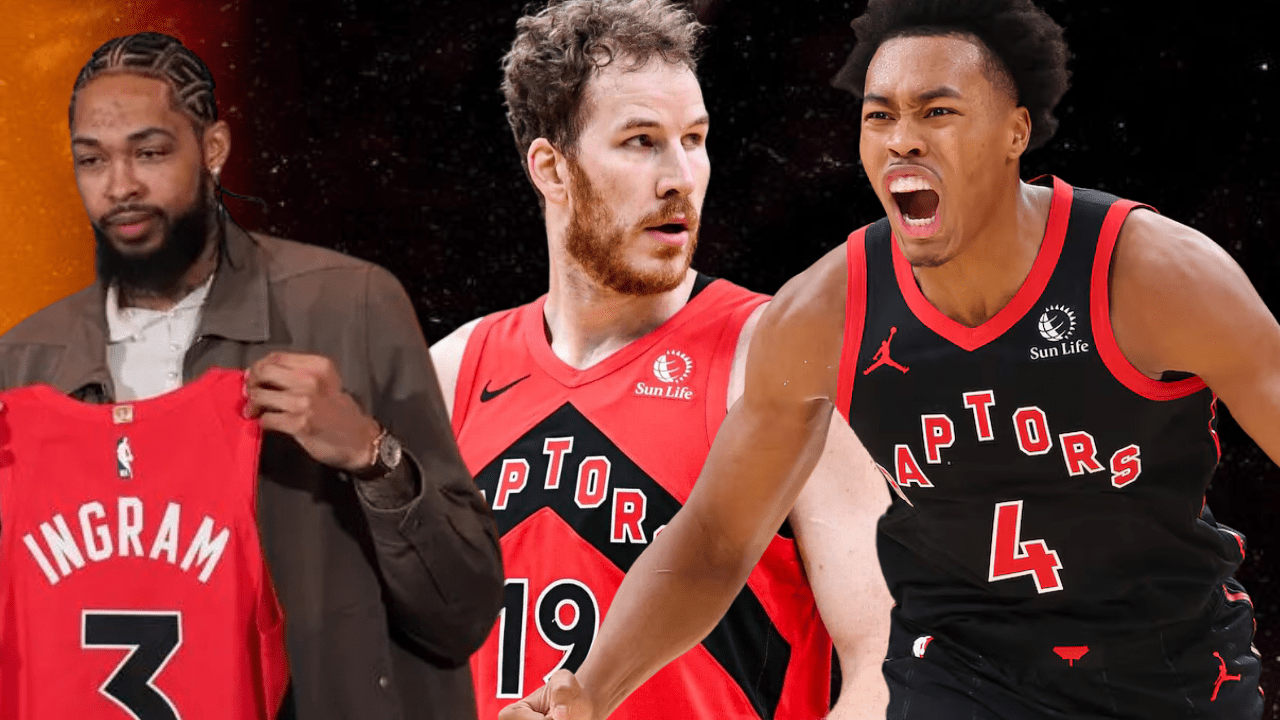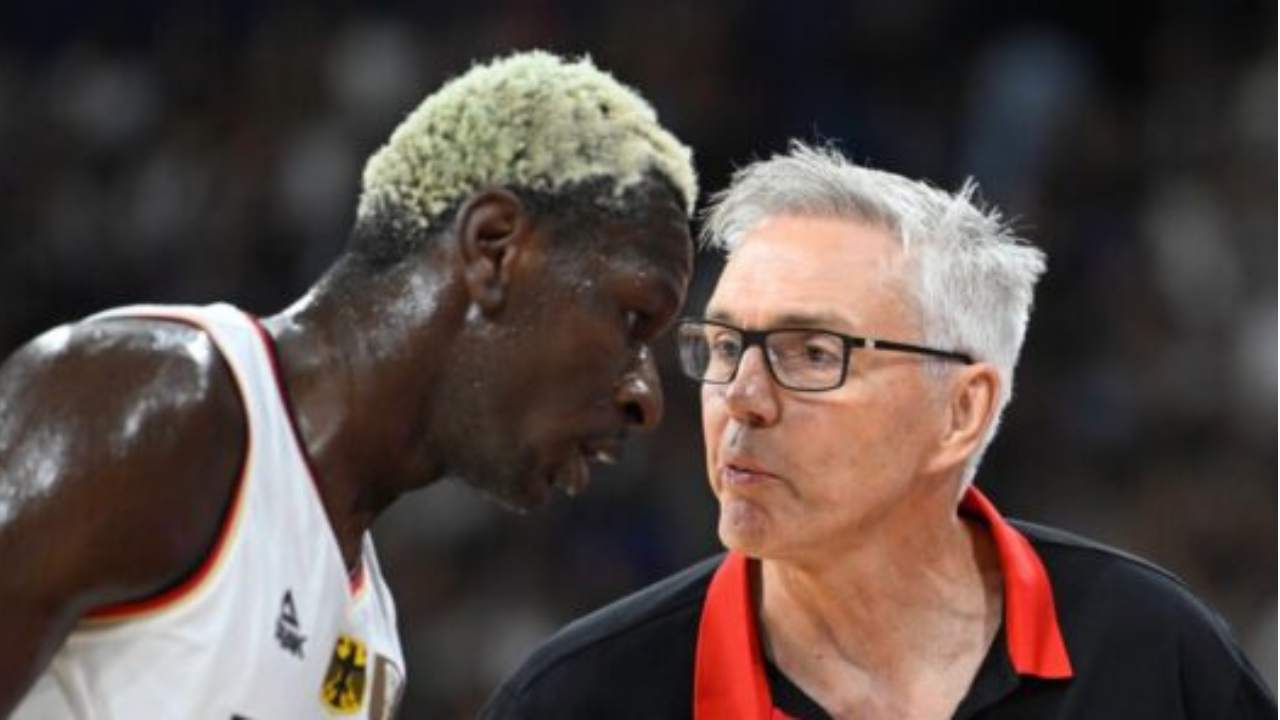The Raptors spent almost a decade going deep in the playoffs, year in and year out, culminating of course in a championship. That was fun, but (for now) it is over. A silver lining? It turns out the playoffs are extremely exciting when you’re an impartial observer. While Raptors fans might have rooting interests (Hello Canadians in Oklahoma), you can enjoy these games much more knowing there are no stakes at play for your team.
But as someone who watches a lot of NBA basketball and covers the Raptors, I’ve been asking myself throughout this postseason: What can the Raptors learn from these games? Are there any takeaways regarding roster construction and team-building? Are there trends that they can either buck or follow?
And the overwhelming answer I’ve come up with, even after just one round, is yes.
The Raptors are still in the early stages of building out the next playoff version of the team. Still, with the addition of Brandon Ingram to the roster next season, they likely intend to play some competitive basketball. And to do that, they need to be as prepared for the postseason as possible.
Here’s what the playoffs are telling me.
Physicality
This has been the case for a while, but teams get away with much more physicality in the playoffs. The pace is slower, and teams have to play in the half-court more often, which generally means a lot more physical play.
But this season, it’s been more physical than ever. By a wide margin. The gap in reffing, physicality, and style between the regular season and the playoffs is unprecedented. There has been some sort of altercation in basically every single game in round one. And no series is immune.
So far, nine teams have been called for over 100 fouls in the playoffs. The five-year average before this post-season was 11 teams that hit that mark. This means that officials have been swallowing their whistles more often.
This undoubtedly helps the Toronto Raptors. They were the most foul-prone team in the NBA this season, committing over 21 fouls a night.
Fouls aren’t always a bad indicator. If you’ll recall, Davion Mitchell earlier this year said something that rings true for good defenses:
Of the 10 teams that committed the most fouls this season, five had top-10 defenses in the regular season. There is some correlation between physicality and good defence. (Part of that is that in order to foul, you simply have to be present for the play.)
Of course, you have to toe the line. Teams that committed fewer than 20 fouls a night were 27-20 in round one, whereas teams that committed more than that were 15-22. Fouling isn’t be itself good. But it often correlates with goodness. And the Raptors finished their year as one of the most aggressive defenses in the NBA, with high pick-up points, full-court pressure, and living in rotation, scrambling out to shooters and using their length to close gaps. That style of defense inherently invites more contact and more fouls.
But it can also be a way to win. The Oklahoma City Thunder and Houston Rockets are two of the most foul-prone teams in the NBA, and that’s just a by-product of their physical brand of basketball. Between Scottie Barnes, Jakob Poeltl, and a feisty point-of-attack defense, the Raptors have the personnel to do something similar.
If the Raptors are allowed to pound opponents like the Detroit Pistons, Rockets, Golden State Warriors, and other teams have so far in the playoffs, that would bode well for Barnes’ ability to blow up plays. It would catalyze Toronto’s aggression and allow the team to hopefully build on its already above-average defence.
Double-Big Lineups
Bigs are back, baby!
Look at any playoff roster and you’ll see a stacked frontcourt. The Cavaliers won 64 games this season with Evan Mobley and Jarrett Allen manning the middle. While Chet Holmgren and Isaiah Hartenstein didn’t get to play together a lot this season, they still had a whopping 13.1 net rating in over 300 minutes. The Celtics have had great success with Kristaps Porzingis and Al Horford for the last two seasons and can now even play Luke Kornet as part of their double-big look. The Houston Rockets are bludgeoning the Golden State Warriors with their Steven Adams-Alperen Sengun lineup with a 30.1 net rating in 75 minutes together.
The league has been trending this way over the last five seasons. The Miami Heat and Golden State Warriors introduced small-ball lineups in the early 2010s; they won tons of championships, and because the NBA is a copycat league, teams tried to follow suit. What ended up happening is that developmentally, bigs became more versatile. The small-ball era of basketball forced 7-footers to shoot the ball more, make more decisions, and have to dribble more than ever. Because of that, the power forward position has changed over the past 15 years. There’s more of an onus on that player to be your most malleable. That resulted in the unicorn: the big man who can be multi-faceted in virtually every approach.
But unicorns aren’t very unique anymore. Holmgren, Mobley, Victor Wembanyama, Paolo Banchero, Sengun, and Karl-Anthony Towns are all different in their own ways, but they embody this wild league-wide shift.
The Raptors have a comparable player in Scottie Barnes. And their double-big look is just their starting lineup with Barnes and Poeltl as their frontcourt pairing. Of the 10 most frequent two-man lineups the Raptors played this season, Barnes and Poeltl were the only pairing that was a net positive. They won their minutes on a team that won 30 games. That’s impressive. With Ingram joining that frontcourt, the Raptors should have the requisite size to be gigantic team, offensive questions be damned. In the playoffs, with extra physicality, those double-big lineups can offer better rebounding, better defence, and other positives.
Of course, the Raptors probably rely on Poeltl and Barnes to a fault because no one else can replace their skillset or competence off the bench. Perhaps they find that in this NBA draft or maybe through trades, but a legitimate backup big man is a key to really making the Raptors playoff-ready.
Possessions Matter
A by-product of the double-big lineups has been the emphasis on winning the possession battle.
It seems like common sense, but the more possessions you have, the more likely you are to win the game. Once upon a time, the Raptors were innovators here. But the league has continued pushing the envelope in the possession game even as Toronto’s time as a frontrunner has waned.
A few round one stats to make you think:
- Teams are 36-6 when winning the turnover battle in games, with an 86-percent win percentage.
- Teams are 29-14 when they take more shots than their opponents.
- Teams are 29-14 when they outrebound their opponents.
On turnovers: The Raptors were 24th in the league per game. They did not take care of the ball, and that could potentially be their Achilles’ heel if they play in the postseason next year. That’s also a direct result of Darko Rajakovic’s offensive system, which is predicated on moving the ball. The Raptors were seventh in assists per game this season and sixth in passes. The more you pass the ball, the more turnover-prone you’ll be. Ingram doesn’t necessarily help in this department either. He’s averaged 2.6 turnovers in his nine-year career. But this is a young team, so maybe they’ll be better at caring for the ball next season.
On rebounds: Raptors are very good in this department — top 10 in the league in rebounds and fourth on the offensive glass. This should be a calling card right here in the postseason. They can double down on this by adding even more size in the summer.
As a result, the Raptors are pretty good at controlling the possession battle in games. They were in the top 10 in total possessions this season, and a big part of that was their rebounding. They’ll be even better if they can focus more on limiting turnovers. Toronto is already above average in this regard, but in order to compete with the league’s best in the possession battle, it will need to improve. There is meat still on this bone.
How ready are the Raptors?
Playoff-ready meter: 4.5 out of 10.
Stylistically, the Raptors will fare well in the postseason because of their physicality on defense, the size of their frontcourt, and their ability to win the possession battle. All of these characteristics really bode well for them.
They still have many questions about reaching their potential playoff ceiling, including their offense and shooting.
While the slower playoff pace will pair well with their defensive physicality and activity, it will also bog down their 25th-ranked half-court offense even more. Despite moving the ball, the Raptors didn’t create shots at an efficient enough level in any play type on offense. They do not have a ‘go-to.’ The playoffs have seen teams like the Houston Rockets get punished for that lack.
Perhaps Ingram’s presence changes that. His mid-range scoring and ability to create shots in tight spaces are exactly what they need offensively, but we still have to wait and see how that all translates with the personnel on the roster.
Of the eight teams headed into the second round, six shot better than 36 percent from 3 in round one, with the Oklahoma City Thunder and Minnesota Timberwolves being the exceptions. The Raptors were not a good shooting team this season, both in frequency (28th) and efficiency (23rd), and that will ultimately be a significant factor in their postseason chances.
Right now, the Raptors’ playoff profile resembles that of the Orlando Magic, Houston Rockets, and Detroit Pistons — three teams that rely on their defense and offensive rebounding to fuel them while failing offensively in terms of shot creation and versatility.
Ultimately, the Raptors aren’t supposed to be playoff-ready right now. This was Year One of a rebuild, and they’re coming off a 30-win season.
But much like the Magic, Rockets, or Pistons, a quick turnaround is possible if things come together the right way next season. From a pure talent perspective, the Raptors have what it takes to make it to the playoffs in a lackluster Eastern Conference.
How they will fare, however, is something that’s up for debate. Still, learning the lessons from the 2025 playoffs can only help.


